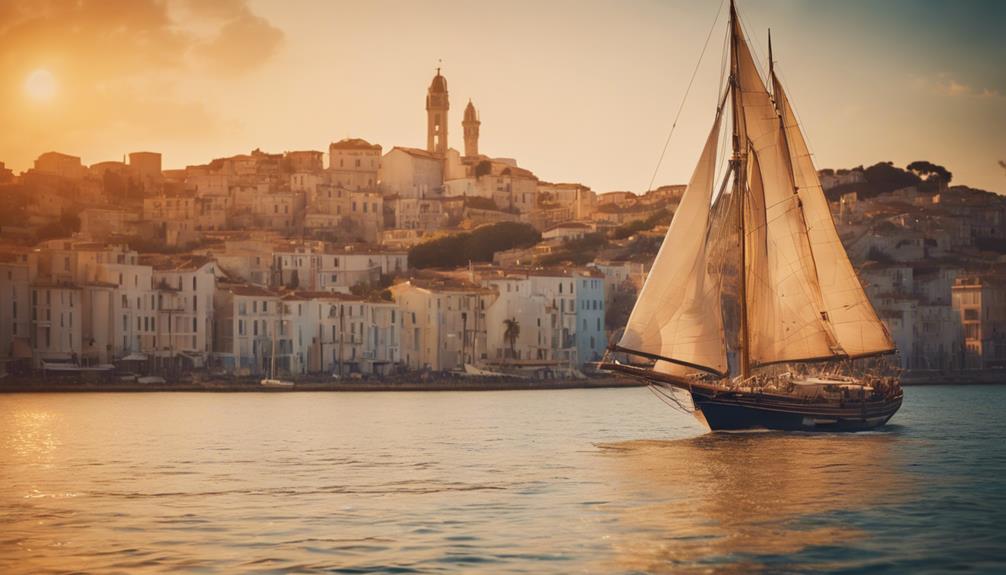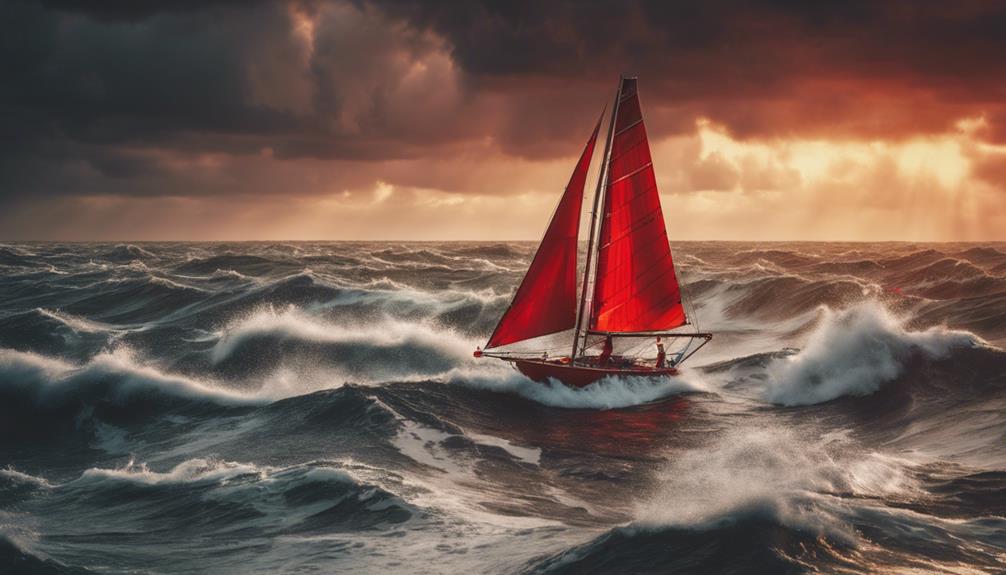You're about to explore the Preussen, the biggest sailboat in history. Launched in the early 20th century, this five-masted barque measured 147 meters and had a sail area of 6,500 square meters, showcasing the pinnacle of maritime engineering. The Preussen served not just as a vessel but as a symbol of innovation until its sinking in 1910. As you journey through the evolution of sailboats, you'll discover other notable ships, modern advancements in design, and the exciting future of sailing vessels. There's much more to uncover about the legacy of these magnificent ships.
Key Takeaways
- The Preussen, launched in the early 20th century, is recognized as one of the largest sailing ships ever built at 147 meters long.
- Modern largest sailing yacht, Golden Horizon, measures 162 meters and emphasizes sustainable tourism.
- Historical sailboats like France II and Thomas W. Lawson showcased innovative designs and engineering of their time.
- Technological advancements in sailing include automated rigging and carbon fiber sails, enhancing performance and safety.
The Preussen: A Historical Overview
The Preussen, launched in the early 20th century, stands out as one of the largest sailing ships ever built, measuring an impressive 147 meters in length. Designed by a talented naval architect, this five-masted barque was a marvel of engineering, showcasing the pinnacle of maritime design of its time. The ship was built with a gross tonnage of 5,081 tonnes, reflecting the robust construction techniques available during that era.
With a sail area of 6,500 square meters, the Preussen could harness significant wind power, allowing it to glide gracefully across the seas. Its sheer size and advanced rigging system marked a turning point in sailing technology, illustrating how shipbuilders began to push the limits of what was possible.
The Preussen served not just as a vessel for trade but also as a symbol of innovation, representing the ambitious spirit of the early 20th century. Sadly, its journey was cut short when it sank after a collision in 1910, ending a remarkable chapter in maritime history.
Even today, it remains a reflection of the grandeur of sailing ships and the artistry of shipbuilding.
Evolution of Sailboat Design

Sailboat design has evolved dramatically over the centuries, reflecting advances in technology and changing maritime needs. You can trace this evolution back to the ancient Egyptians, who used primitive vessels with square sails around 3100 BC.
As you move through history, you'll see considerable advancements, particularly during the medieval period. Ships like Columbus's La Santa María and Vasco da Gama's São Gabriel showcased improved hull designs and sail efficiency, enabling longer voyages across the Atlantic and Indian Oceans.
The 19th century brought a major shift as steam propulsion began to replace sail. The steamship Sirius, for instance, considerably reduced Atlantic crossing times.
Fast forward to the 20th century, and innovations in materials and rigging allowed for the construction of larger, more complex sailing vessels. The Maltese Falcon, featuring automated DynaRig technology, exemplifies this progression towards ease of handling.
Today, you can marvel at the largest sailing ships, such as the Golden Horizon, measuring 162 meters. These modern vessels combine traditional sailing techniques with cutting-edge design, showcasing the remarkable journey of ship design throughout history.
Notable Sailboats Through Time
Throughout history, numerous notable sailboats have made significant impacts on maritime culture and technology, each contributing to the evolution of sailing.
The Preussen, launched in the early 20th century, stands out as one of the largest sailboats ever built. This five-masted barque, measuring 147 meters in length, grossed 5,081 tonnes before its tragic sinking after a collision.
Another impressive vessel, the France II, launched in 1912, showcased innovative design with its three-island deck. It had a gross tonnage of 5,633 tonnes and an expansive sail area of 6,350 square meters, making it a remarkable passenger ship of its time.
Don't forget the Thomas W. Lawson, the seven-mast schooner built in 1901, which weighed in at 5,218 tonnes before meeting its fate in a storm near the Scilly Islands.
The Vasa, constructed in the early 1600s, is famous for its maiden voyage disaster but now serves as a museum ship.
Finally, America, launched in 1851, is celebrated as the first winner of the America's Cup, marking its place in sailing history.
Each of these vessels has left a lasting legacy.
Largest Sailing Yachts Today
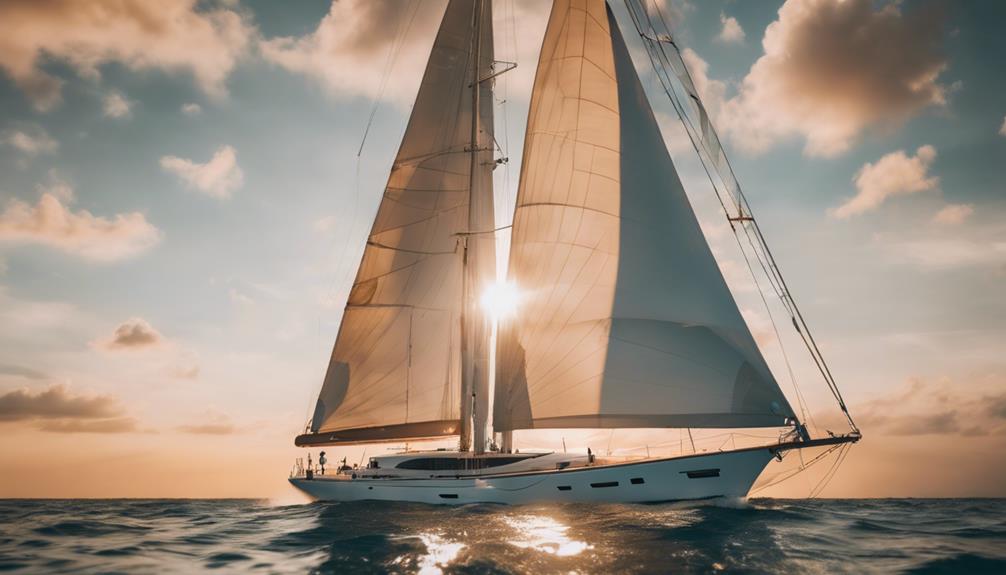
How do today's largest sailing yachts compare to historical giants with respect to size and innovation? The current landscape of sailing yachts showcases impressive advancements and sheer scale.
The largest sailing yacht today is the Golden Horizon, stretching 162 meters, designed to navigate from the Arctic to the Antarctic. This surpasses even the oldest passenger ship still afloat, the Sea Cloud, which measures 109 meters and dates back to 1931.
In recent years, Sailing Yacht A has emerged as another giant, measuring 142 meters and featuring three towering 100-meter carbon fiber masts. Then there's Koru, formerly known as Y721, at 127 meters long, recognized as the tallest sailing yacht in the world with masts exceeding 230 feet.
Lastly, the Black Pearl, delivered in 2018, isn't just 106 meters long but also incorporates innovative designs like solar power generation.
Together, these largest sailing yachts illustrate a remarkable blend of historical inspiration and modern technology, redefining luxury and performance at sea. As you explore these vessels, you'll appreciate how far sailing has come from the days of traditional cargo ships and classic yachts.
Technological Advancements in Sailing
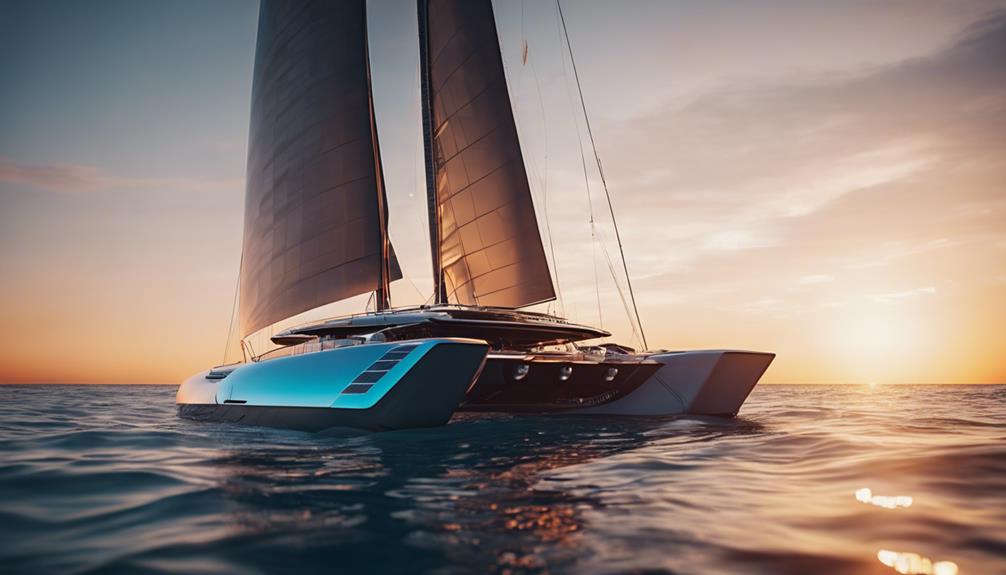
When you think about modern sailing, innovations in sail design, materials, and construction methods stand out.
These advancements not only enhance performance but also improve safety and durability.
Plus, navigation technology has evolved dramatically, making it easier for you to steer even the largest vessels with precision.
Innovations in Sail Design
Innovative sail designs have transformed modern sailing, enabling vessels to harness wind power more efficiently and achieve remarkable speeds. With advancements in sail shape and design, including wing sails and soft sails, you can now experience enhanced aerodynamic efficiency that allows modern yachts to navigate various ocean conditions with ease.
The use of advanced materials like carbon fiber has revolutionized the construction of sails, making them lighter yet stronger. For instance, the Black Pearl boasts over 31,000 square feet of sail area, reaching speeds up to 30 knots under sail.
Automated rigging systems, such as the DynaRig found on the Maltese Falcon, simplify sail handling, enhancing safety and performance. You'll notice that many modern sailboats, like the five-masted barque Golden Horizon, feature complex rigging configurations that maximize sail area and efficiency.
Additionally, the introduction of computer-aided design (CAD) allows for precision-engineered sail profiles tailored to specific conditions and vessel types. These innovations in sail design not only push the boundaries of speed and performance but also make sailing more accessible and enjoyable for everyone.
Materials and Construction Methods
Modern advancements in materials and construction methods have greatly enhanced the durability and performance of sailing vessels, making them more resilient against the challenges of the open sea. Take the Golden Horizon, for example; its robust steel hull, constructed from 4,500 tonnes of Ukrainian steel, allows it to withstand harsh maritime environments. With a hull design composed of 90% steel, you can trust this ship's structural integrity during long voyages.
Innovative underwater plasma cutting techniques play an essential role in the assembly of ship components, ensuring efficiency and accuracy in construction. These methods streamline the building process, allowing for faster turnaround times without sacrificing safety. Additionally, modern sailing vessels often incorporate dual systems for water and electric supply, promoting redundancy and reliability during critical operations.
Furthermore, the use of advanced materials like carbon fiber in fiber masts and rigging represents a significant leap forward. These lightweight components contribute to enhanced speed and performance while maintaining strength. As you explore the world of sailing, you'll see how these technological advancements make today's vessels not only more powerful but also more efficient on the open seas.
Navigation Technology Evolution
Over the centuries, navigation technology has transformed sailing, evolving from celestial methods to sophisticated systems that enhance safety and accuracy on the water. Initially, sailors relied on celestial navigation, using the positions of stars and celestial bodies to guide their journeys. This method served them well for centuries, but it had its limitations.
The 12th century brought the compass, revolutionizing navigation by providing a consistent way to determine direction, regardless of time or weather conditions. In the 18th century, the development of sextants enabled sailors to calculate latitude and longitude with greater precision, making long-distance voyages more reliable.
Fast forward to the late 20th century, and GPS technology emerged, fundamentally changing navigation. Now, you can track your vessel's position in real-time, allowing for meticulous route planning and considerably reducing the chances of getting lost at sea.
Modern sailing vessels are increasingly equipped with advanced navigation systems, including radar and electronic chart plotters. These tools enhance not only your ability to navigate diverse maritime environments but also the overall safety and efficiency of your sailing experience. Embracing these advancements can make your journeys smoother and more enjoyable.
The Future of Sailing Vessels
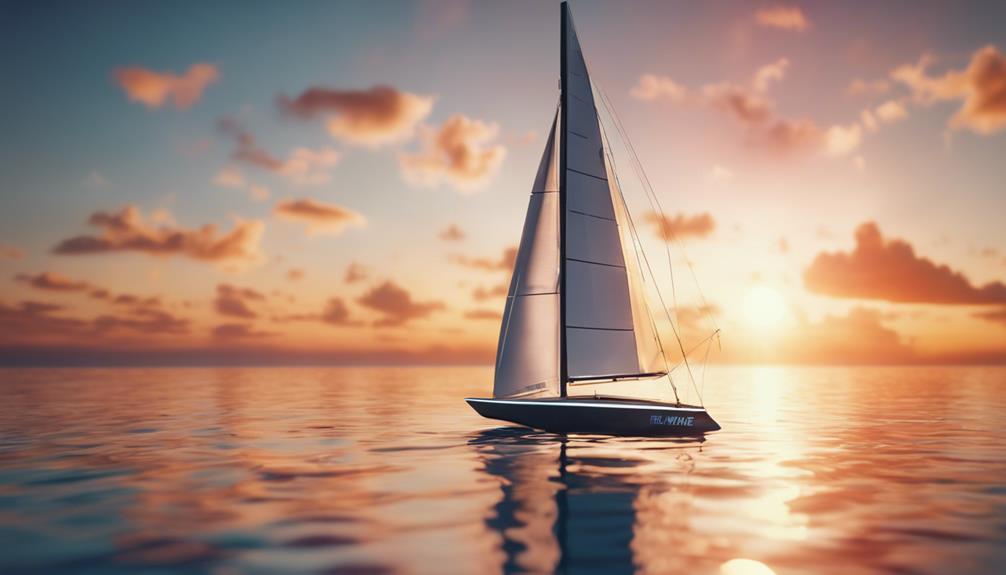
As sailing technology evolves, you'll find that future vessels aren't just larger but also designed with sustainability and luxury in mind. The Golden Horizon, currently the largest sailing ship in the world, exemplifies this shift towards sustainable tourism. With its impressive 162-meter length, it can navigate from Arctic to Antarctic regions while promoting eco-friendly sailing practices.
Innovative designs like those seen in the Black Pearl and Maltese Falcon showcase how modern yachts are incorporating solar power and automated rigging systems to enhance efficiency. You can expect future sailing vessels to accommodate up to 300 passengers, offering luxurious amenities such as pools and spas, all while maintaining a commitment to sustainability.
This growing trend reflects a significant influence of environmental concerns within the sailing industry. New designs are increasingly aimed at reducing emissions and promoting eco-friendly practices.
As you observe these changes, you'll realize that the future of sailing isn't just about grandeur but also about responsibility towards our planet. Embracing these advancements will guarantee that sailing remains an enjoyable and sustainable experience for generations to come.
Frequently Asked Questions
What Is the Largest Sailboat of All Time?
The largest sailboat of all time is the Golden Horizon. Measuring 162 meters, it boasts five masts and 39 sails, offering luxurious amenities while promoting sustainable tourism and steering through various sea conditions effortlessly.
What Is the World's Largest Sailboat?
The world's largest sailboat is the Golden Horizon. At 162 meters long, it's a five-masted barque, carrying 300 passengers with a crew of 150, showcasing impressive engineering and sail area for diverse sea conditions.
What Is the Biggest Sailboat One Person Can Sail?
Imagine battling the waves alone. You can handle a 40-foot yacht comfortably, but if you're experienced, you might tackle a 50-footer. Just remember, the bigger the boat, the more skill you'll need!
What Was the Largest Ship in the Age of Sail?
The largest ship of the Age of Sail was the 'Preussen.' Launched in 1902, it measured 147 meters and showcased incredible speed and design, making it a remarkable achievement in maritime history before its tragic sinking in 1910.
Conclusion
As you reflect on the evolution of sailboats, it's fascinating how the Preussen, once the largest sailing ship, set the stage for today's impressive yachts.
Coincidentally, the innovations that followed not only transformed design but also sparked a renewed passion for sailing.
You might find it intriguing that, just as the Preussen pushed boundaries, the future of sailing vessels is poised for breakthroughs that could redefine maritime adventures.
Who knows what wonders await on the horizon?

